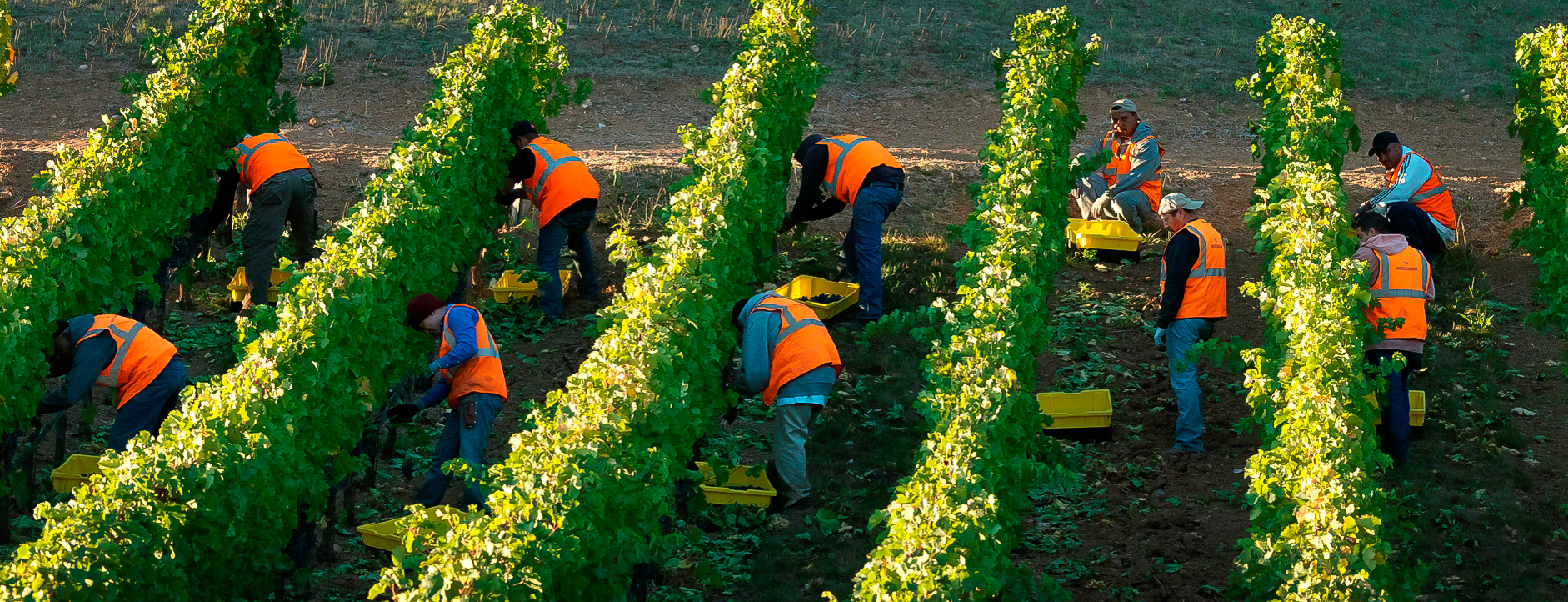Harvest
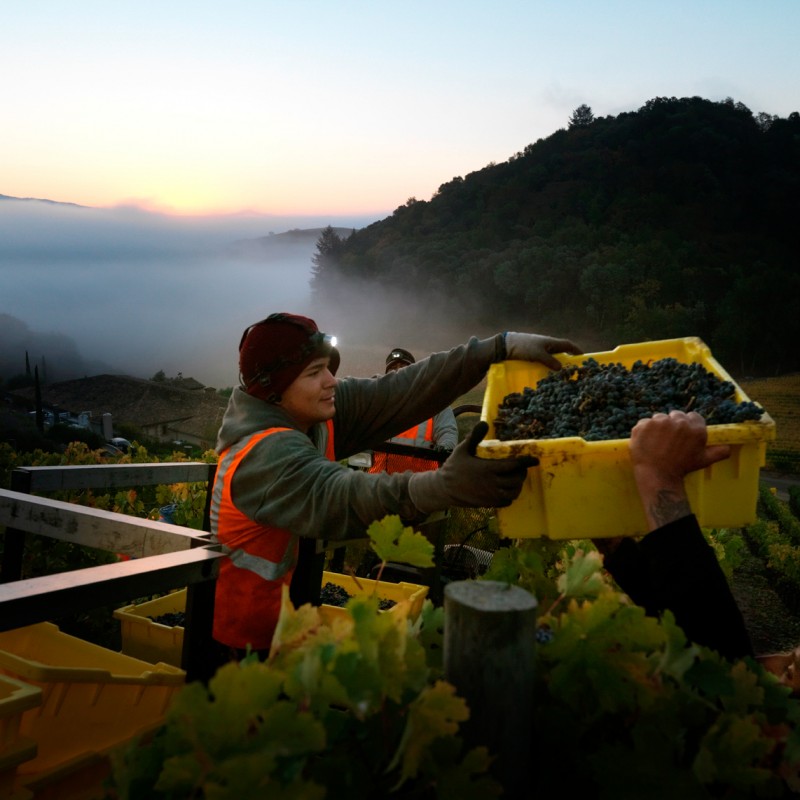
We grow four varietals of grapes planted in many different soils with an array of sun exposure. Two decades of farming has taught us that because our berries ripen sequentially, it requires up to thirty-two mini harvest to bring them in at an optimum state of maturity.
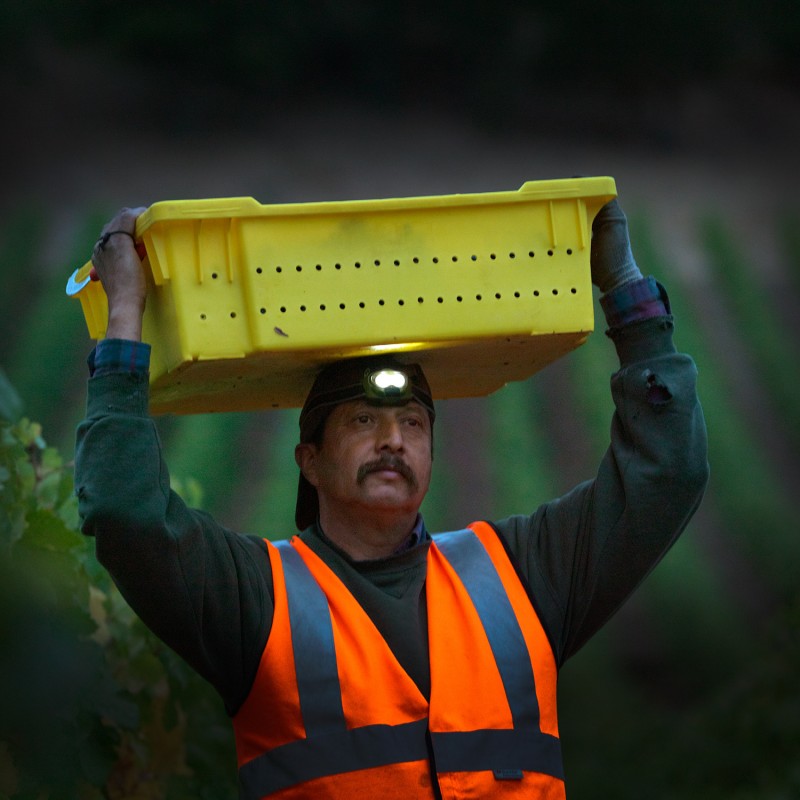
While sugar levels, acidity and pH provide basic maturity guidelines, picking decisions are made by tasting berries during our daily walk. We harvest the vineyard like a big vegetable garden. When a section is assessed to be ready, its fruiting zone is de-leafed in the late afternoon and any damaged clusters are trimmed or eliminated.
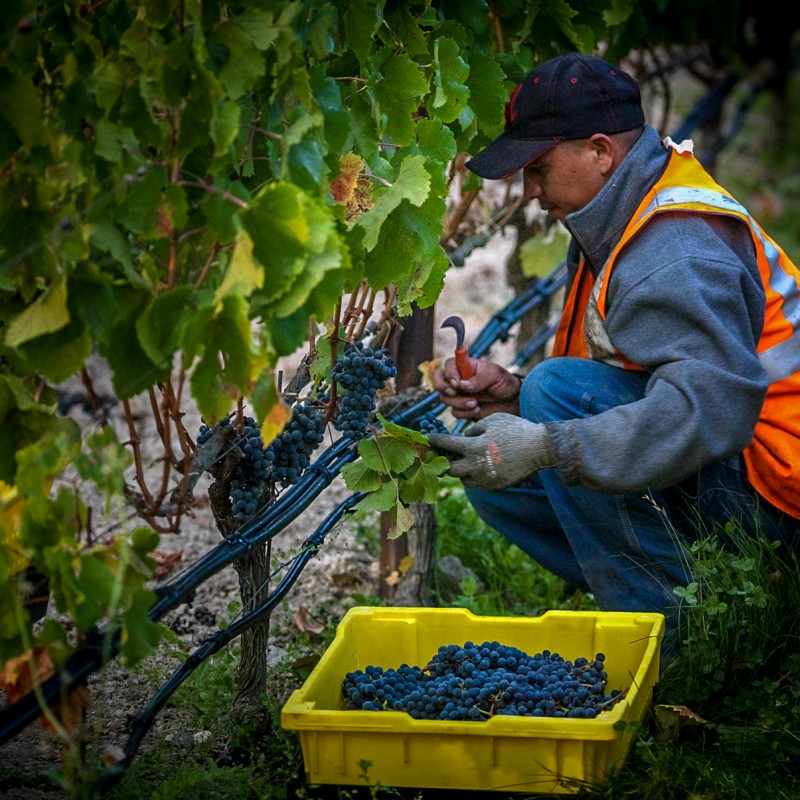
Harvesting begins at 4:00 am the next day. Picking at night is hard work but the 50 + degrees temperature of the Napa Valley prevents any wild yeast auto-fermentation. Fruit flies that can transfer acetic bacteria (vinegar making) by contact are inactive at night. The cold also calms down the aggressive yellow jackets and protect the crew from their painful and dangerous stings. The grapes are collected in small stackable trays and immediately transferred to the winery cold caves.
Years ago we sorted fruit manually on fifty foot long conveyor tables operated by 18 to 28 people. This was an inconsistent system, but it was the best we knew at that time. We recently updated our sorting assembly with the most gentle de-stemmer in the world. We also added two optical sorters in line. These electronic machines using laser beams and high-speed cameras, kick out the unwanted berries in a few thousandths of a second. This system has eliminated outside labor and perfectly sorts our berries, keeping them cold and protected from oxidation.
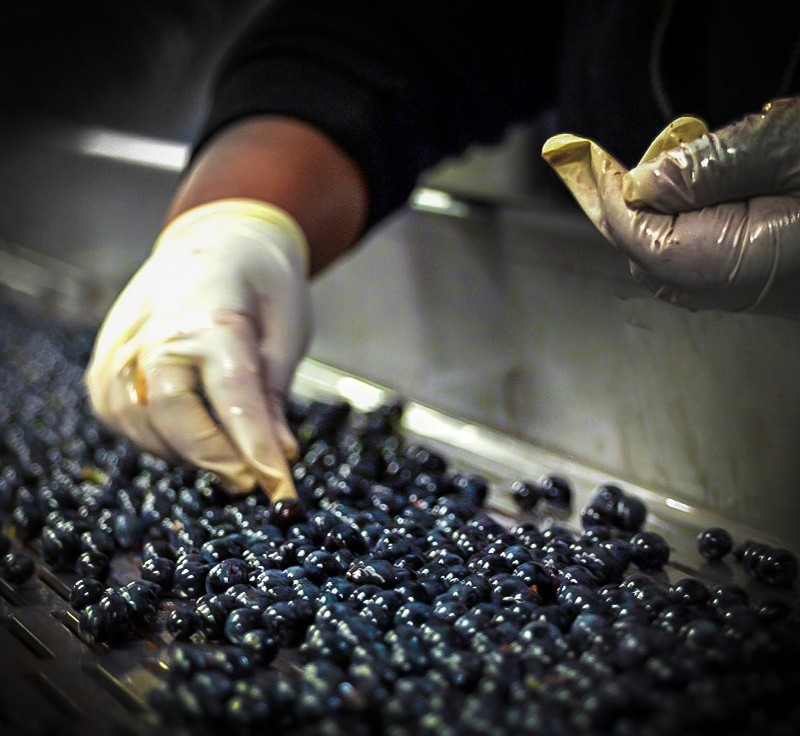
Carbon dioxide ice is then added to the collecting bins to maintain the fruit at a cold temperature while displacing oxygen. Finally, the bins are gravity loaded into small fermentation tanks to begin their cold maceration cycle. View Vinous videos of our 2011 harvest and 2012 harvest

